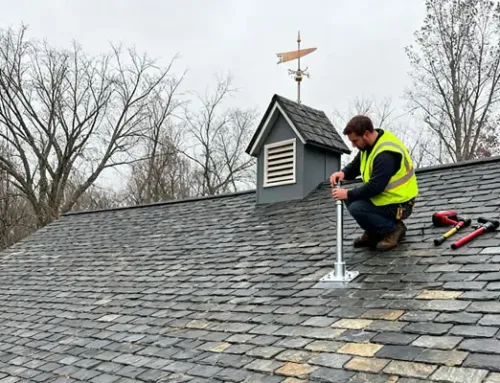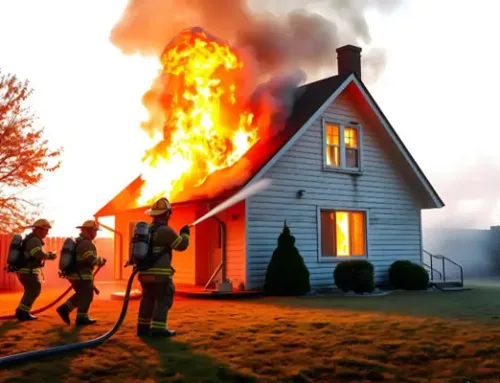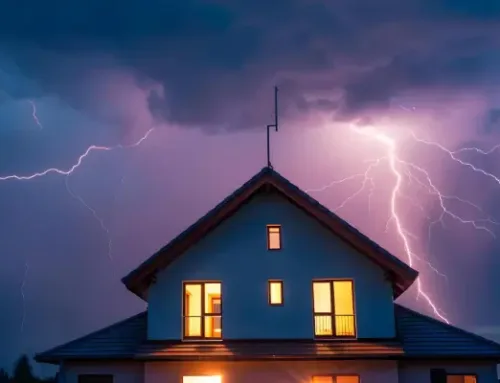A lightning strike can cause a fire through several mechanisms due to the immense energy and heat it delivers upon striking an object. Here’s a detailed explanation of how a lightning strike can ignite a fire.
Why Lightning strikes can fire?
Direct Ignition
- Heat Generation: A lightning strike can reach temperatures of around 30,000 Kelvin (53,540°F). This intense heat can ignite combustible materials instantly upon contact.
- Wood and Trees: Lightning often strikes trees, causing the sap inside to vaporize explosively, which can lead to a fire. Wooden structures or materials in direct contact with the strike can also catch fire from the extreme heat.
2. Secondary Ignition
- Sparks and Molten Material: The high temperature can create sparks or molten metal, which can fall onto flammable materials like dry leaves, grass, or wooden structures, igniting them.
- Power Surges: A lightning strike on or near power lines can cause electrical surges that travel through wiring, potentially igniting insulation or causing electrical fires in buildings.
3. Structural Damage Leading to Fire
- Explosive Effects: The rapid expansion of air and materials can cause structural damage, such as breaking windows or damaging walls. This damage can expose flammable materials or create conditions conducive to fire.
- Gas Lines and Tanks: Lightning can rupture gas lines or ignite flammable vapors from tanks, leading to explosions and fires.
4. Induced Currents and Arcs
- Induced Electrical Currents: A lightning strike can induce electrical currents in nearby conductive materials, such as metal pipes or wiring, causing them to overheat and ignite surrounding flammable materials.
- Electrical Arcing: The intense electrical discharge can cause arcing between conductive materials, producing sparks that can ignite fires.
Preventive Measures
- Lightning Protection Systems (LPS)
- Air Terminals: Install air terminals (lightning rods) to intercept strikes and safely conduct the electrical energy to the ground.
- Down Conductors: Use down conductors to route the lightning current from the air terminals to a grounding system.
- Grounding System: Ensure a low-resistance path to dissipate the energy into the earth.
- Surge Protection Devices (SPDs)
- Electrical System Protection: Install SPDs to protect electrical and electronic systems from power surges caused by lightning.
- Bonding and Grounding: Properly bond and ground all electrical systems and metallic components to minimize the risk of electrical fires.
- Building Materials and Design
- Fire-Resistant Materials: Use fire-resistant building materials, especially in areas prone to lightning strikes.
- Proper Ventilation: Ensure adequate ventilation in attics and other spaces to prevent heat build-up.
- Regular Maintenance and Inspections
- Inspect LPS: Regularly inspect and maintain the lightning protection system to ensure its effectiveness.
- Check Electrical Systems: Periodically check electrical systems and wiring for signs of wear or damage.
Conclusion
Lightning strikes can cause fires through direct ignition, secondary ignition, structural damage, and induced electrical effects. Implementing comprehensive lightning protection systems, using fire-resistant materials, and conducting regular maintenance and inspections are essential measures to mitigate the risk of fires caused by lightning.




